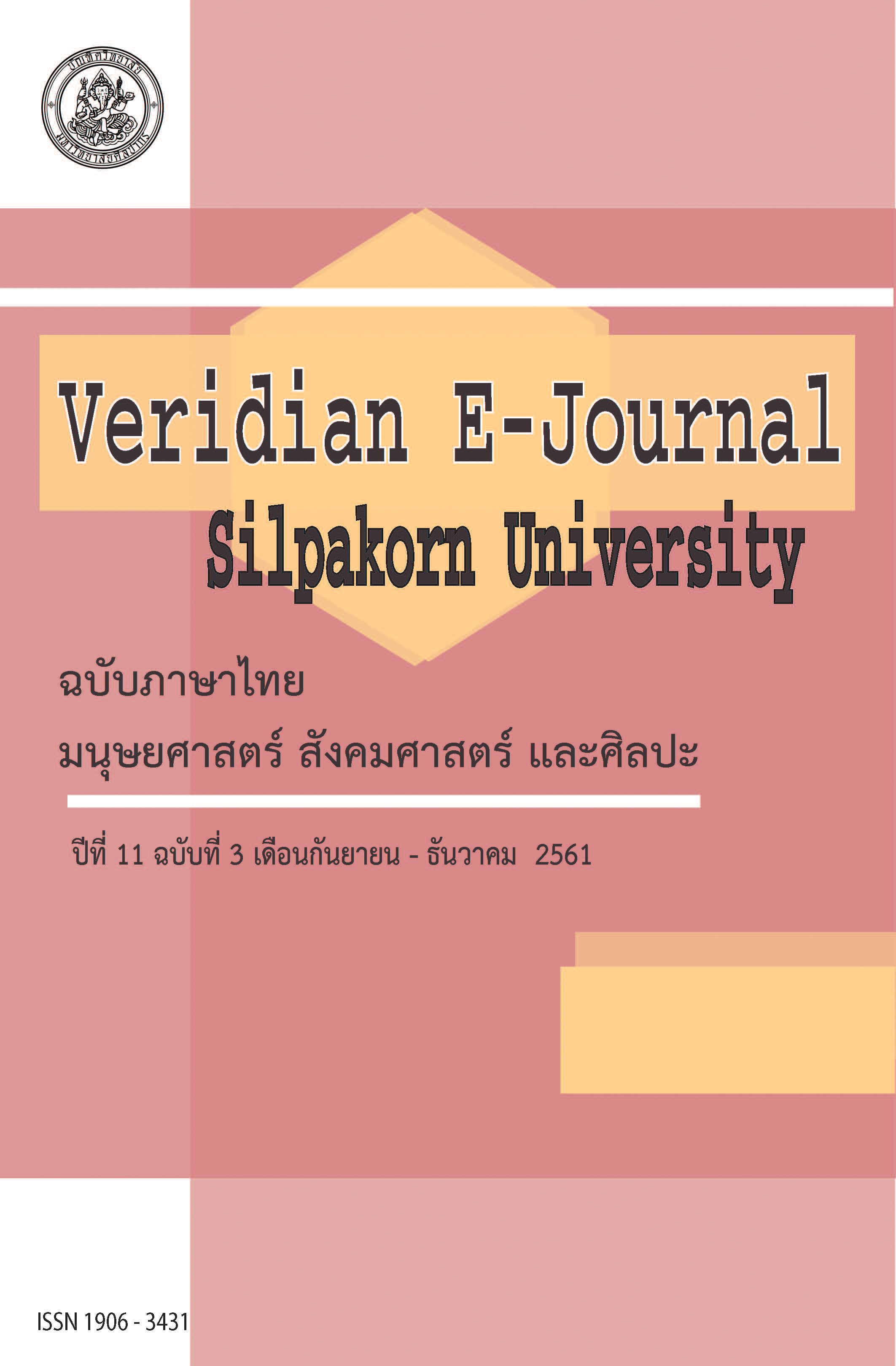คุณภาพบริการ ภาพลักษณ์องค์การ และความพึงพอใจของลูกค้าที่มีผลต่อความตั้งใจ เชิงพฤติกรรมของผู้โดยสารที่ใช้บริการรถไฟสายใต้ (Service Quality, Corporate Image and Customer Satisfaction toward Behavioral Intention of Passengers in the Southern Rail Line Services)
Main Article Content
Abstract
การวิจัยนี้มีวัตถุประสงค์เพื่อศึกษาโครงสร้างความสัมพันธ์เชิงสาเหตุระหว่างคุณภาพบริการ ภาพลักษณ์องค์กร และความพึงพอใจของลูกค้าที่มีผลต่อความตั้งใจเชิงพฤติกรรมของผู้โดยสารที่ใช้บริการรถไฟในพื้นที่ภาคใต้ การวิจัยครั้งนี้เป็นการวิจัยแบบผสานวิธี ทั้งเชิงปริมาณและเชิงคุณภาพร่วมกัน (Mixed Method Research) ซึ่งเป็นการออกแบบวิจัยแบบเรียงตามลำดับ โดยดำเนินการรวบรวมข้อมูล และวิเคราะห์ข้อมูลการวิจัยเชิงปริมาณก่อน ต่อด้วยการวิจัยเชิงคุณภาพ การวิจัยเชิงปริมาณ เก็บรวบรวมข้อมูลด้วยแบบสอบถามจากผู้โดยสารที่ใช้บริการรถไฟสายใต้จำนวน 300 คน วิเคราะห์ข้อมูลแบบจำลองสมการโครงสร้างด้วยโปรแกรมลิสเรล ผลการวิเคราะห์พบว่าแบบจำลองที่พัฒนาขึ้นมีความสอดคล้องกับข้อมูลเชิงประจักษ์ (c2= 93.30, df=75, c2/df =1.24, RMSEA=0.029, CFI=0.99) โดยคุณภาพบริการ ภาพลักษณ์องค์การ และความพึงพอใจของลูกค้าสามารถอธิบายความแปรปรวนของตัวแปรในปัจจัยความตั้งใจเชิงพฤติกรรมได้ร้อยละ 78 และพบว่าความตั้งใจเชิงพฤติกรรมได้รับอิทธิพลรวมจากความพึงพอใจของลูกค้าสูงที่สุด ที่ระดับนัยสำคัญทางสถิติ .05 โดยมีขนาดอิทธิพลเท่ากับ 0.64 สำหรับการวิจัยเชิงคุณภาพ เก็บรวบรวมข้อมูลโดยใช้วิธีการสัมภาษณ์ ผลการวิจัย พบว่าผู้ให้ข้อมูลจะเลือกเดินทางด้วยรถไฟเป็นวิธีแรก เนื่องจากคุ้นชินกับการเดินทางด้วยรถไฟ นอกจากนั้น ส่วนใหญ่ระบุว่าจะกลับมาใช้บริการอีก และจะสนับสนุนให้เพื่อนหรือญาติเดินทางด้วยรถไฟ การรถไฟฯ ควรยกระดับการให้บริการที่ดีขึ้นทั้งด้านระยะเวลาการเดินทาง ความสะอาด สิ่งอำนวยความสะดวกบริเวณสถานี และการเพิ่มจุดจำหน่ายตั๋วเพื่อจูงใจให้คนไทยหันกลับมาใช้บริการการเดินทางด้วยรถไฟเพิ่มมากขึ้น
The purposes of this study to develop the causal model between service quality, corporate image, customer satisfaction affecting behavioral intentions of passenger in the southern rail line services. This research is a mixed method, both qualitative and quantitative: The explanatory sequential design. This research conducted data collection and analysis of quantitative research data. Then conduct qualitative research. Quantitative research Data were collected by questionnaires from 300 passengers traveling on the Southern Railway. Data was significantly statistical analyzed by using LISREL program. The results indicated the developed model was valid and fitted to empirical data (c2= 93.30, df=75, c2/df =1.24, RMSEA=0.029, CFI=0.99). Moreover, the results reveal that service quality, corporate image, customer satisfaction were described 78 percent of the variance of behavioral intentions. Customer satisfaction had the highest total effect on behavioral intentions with effect size of 0.64 at the significance level of 0.05. For qualitative research, data were collected by interview method. The results showed that data providers choose to travel by train as the first method because used to travel by train and will travel by train if there is enough time. In addition, most will indicate that they will return to the service and will encourage their friends or relatives to travel by train. The State Railway of Thailand should improve its services in terms of travel time, cleanliness, facilities at the station, and increase ticketing points to encourage Thai people to return to the train services.

